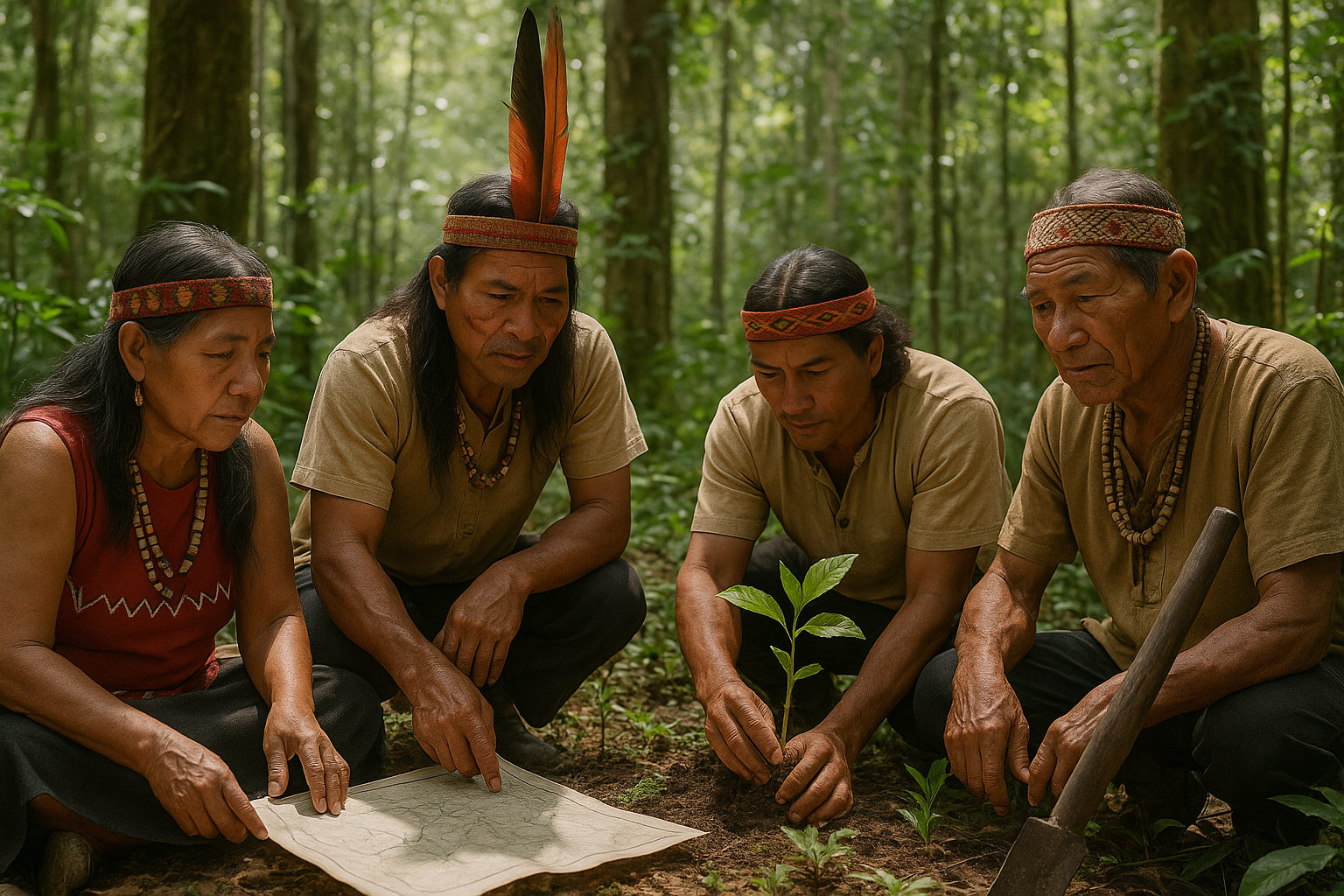In a world where the concept of nations is predominantly tied to vast expanses of land, complex governance structures, and historical legacies, there exists a curious phenomenon that challenges conventional definitions of what a country can be. Welcome to the whimsical yet intriguing realm of micro-nations, where the boundaries of imagination stretch far beyond those of conventional geography. “Drawing the Line: Unveiling the Intriguing Boundaries of Micro-nations on the Sand” takes you on a journey into this captivating universe, where the lines between reality and creativity blur, offering us a fresh perspective on sovereignty, identity, and community.
At first glance, micro-nations might seem like little more than a quirky hobby for eccentric individuals. However, delve a little deeper, and you’ll discover a world rich with cultural experimentation, political satire, and passionate declarations of independence. These self-proclaimed entities, often founded on patches of unclaimed land or digital spaces, defy the traditional notions of nationhood. They challenge us to reconsider what it means to be a nation and provoke thought about the nature of power and governance. 🌍 What drives individuals to embark on such endeavors? How do they establish legitimacy, and what challenges do they face in their quests for recognition? As we explore these questions, you’ll uncover the fascinating stories of some of the world’s most intriguing micro-nations.
Throughout this article, we’ll embark on a tour of some of the most notable and peculiar micro-nations that dot the landscape of global curiosity. From the Principality of Sealand, perched precariously on a former military platform in the North Sea, to the artistic haven of the Republic of Užupis in Lithuania, these micro-nations represent a diverse array of motivations and aspirations. Some are born out of political protest, others from a desire to experiment with new forms of governance, and yet others from the simple human need for creative expression. 🌐 We’ll examine their origins, explore their cultural and political landscapes, and ponder the implications they hold for the broader understanding of nationhood.
As you read on, prepare to have your perceptions challenged and your curiosity piqued. In a world increasingly defined by rigid borders and political tensions, micro-nations offer a playful yet profound commentary on the possibilities of reimagining community and identity. Whether you view them as serious political statements or playful escapades, micro-nations provide a unique lens through which to explore the limits of sovereignty and the human desire to carve out a space of one’s own. As we draw the line between the real and the imagined, the established and the emerging, you’re invited to explore the intricate tapestry of aspirations that shape these fascinating territories. Join us as we uncover the stories behind the sands of these micro-nations and embark on an exploration of the boundaries of human creativity and ambition. 🌟
The Rise of Micro-Nations
In the vast expanse of governance and territorial claims, micro-nations stand as curious anomalies, challenging traditional notions of nationhood. These self-proclaimed entities, often emerging on small swathes of land or even sandbanks, present a fascinating study of human ingenuity and the desire for sovereignty. While most are not officially recognized by world governments, micro-nations can wield significant cultural and symbolic influence. Their existence raises questions about identity, legal recognition, and the limits of sovereignty. Delve into the world of micro-nations and discover how they draw their lines on the sand.
Micro-nations often arise from diverse motivations. Some are born out of protest, as a form of political or social statement against larger governments. Others are whimsical projects, created for entertainment or artistic expression. A few may have genuine aspirations of independence, seeking to establish a new societal order. The varied reasons behind their creation contribute to their intrigue and complexity. The whimsical nature of micro-nations does not diminish their ability to challenge and provoke thought about governance and autonomy.
The appeal of creating a micro-nation extends beyond the mere act of drawing borders. For many, it represents a canvas to experiment with governance structures, societal norms, and even economic systems. These small territories become laboratories for innovation, where leaders can test ideas without the bureaucratic constraints of larger states. By examining these unique entities, we gain insight into alternative forms of organization and the human desire for self-determination. To better understand their impact, let us examine the characteristics and motivations behind some notable micro-nations.
Notable Micro-Nations and Their Motivations
Throughout history, numerous micro-nations have captured public imagination. One of the most famous is the Principality of Sealand, founded in 1967 on a disused sea fort off the coast of England. Initially established as a pirate radio station, Sealand now claims independence and even issues its own passports and currency. This micro-nation serves as a testament to the power of perseverance and the desire for sovereignty in the face of adversity.
Another example is the Republic of Molossia, an American micro-nation founded by Kevin Baugh. Nestled in Nevada, Molossia is an elaborate exercise in nation-building, complete with a currency, national holidays, and even a space program. While primarily a hobby, Molossia embodies the spirit of creativity and exploration that drives many micro-nation founders. These examples highlight the diversity of micro-nations, each with its unique origin story and purpose.
The motivations behind these projects are varied. Some are driven by a desire for political change, while others seek to create a utopian society. Regardless of their underlying intentions, micro-nations offer valuable lessons about identity, community, and the limits of state power. By examining their histories and motivations, we gain a deeper appreciation for the human spirit’s capacity to imagine and create. To further explore the dynamics of micro-nations, let’s look at a comparative analysis of their structures and governance.
| Micro-Nation | Location | Founded | Key Features |
|---|---|---|---|
| Principality of Sealand | North Sea, UK | 1967 | Independent passports, self-declared currency |
| Republic of Molossia | Nevada, USA | 1999 | Currency, national holidays, space program |
| Conch Republic | Florida Keys, USA | 1982 | Humorous secession, tourism focus |
For a more in-depth look at these fascinating micro-nations, check out this engaging video: “Exploring the World’s Strangest Nations” by History Scope. 🎥
Legal Challenges and Sovereignty
One of the most intriguing aspects of micro-nations is their legal status. Despite their claims of independence, most micro-nations lack formal recognition by any established government. This presents a unique set of challenges, as these entities navigate the complex web of international law. The question of sovereignty is central to their existence, raising important discussions about the nature of statehood and legal recognition.
International law typically defines a sovereign state as having a permanent population, defined territory, government, and the capacity to enter into relations with other states. Micro-nations often struggle to meet these criteria, which can hinder their quest for legitimacy. However, this does not deter their founders from pursuing recognition, and in some cases, micro-nations have managed to establish informal diplomatic relations or attract attention from international bodies.
The lack of official recognition does not preclude micro-nations from exercising certain rights. Many establish their own legal systems, issue passports, and engage in trade. These actions challenge traditional notions of statehood and highlight the fluidity of sovereignty. By examining the legal challenges faced by micro-nations, we gain insight into the complexities of international law and the possibilities for alternative governance structures. This section will delve deeper into the legal intricacies of micro-nations and the quest for recognition.
The Quest for Recognition
For many micro-nations, the pursuit of recognition is a fundamental aspect of their identity. Recognition can confer a sense of legitimacy and offer protection under international law. However, achieving this recognition is often fraught with challenges, as micro-nations must navigate the complex criteria set by the international community. These criteria are often stringent, requiring a permanent population, defined territory, and a stable government.
Despite these challenges, some micro-nations have made strides in gaining attention on the world stage. The Principality of Hutt River, for example, claimed secession from Australia in 1970 and managed to operate with relative autonomy for several decades. Though not formally recognized, it established informal relations with other micro-nations and even issued its own currency. This example highlights the potential for micro-nations to carve out a niche in the international landscape.
The quest for recognition often involves creative strategies, such as engaging with international media or leveraging digital platforms. These efforts can bring attention to their cause and foster a sense of community among supporters. While official recognition may remain elusive, the cultural and symbolic impact of micro-nations is undeniable. By exploring their quest for recognition, we uncover the complexities and possibilities of statehood in the modern world.
The Cultural and Economic Impact of Micro-Nations
Beyond the legal and political challenges, micro-nations often exert a significant cultural and economic influence. Many of these entities embrace their unique identities, creating rich traditions and customs that attract global attention. From issuing stamps and currency to hosting unique festivals, micro-nations foster a sense of community and pride among their citizens and admirers.
The cultural impact of micro-nations extends to their role in challenging traditional narratives of nationhood. By asserting their sovereignty, they provoke discussions about identity, governance, and the limits of state power. These discussions are often enriched by the creative expression and storytelling that characterize many micro-nations. Through music, art, and literature, they capture the imagination and contribute to a diverse global tapestry.
Economically, micro-nations often rely on tourism and memorabilia sales to sustain their activities. This creates opportunities for economic innovation and entrepreneurship. By capitalizing on their unique stories and identities, micro-nations can attract visitors and generate revenue. These economic activities not only support the micro-nation but also contribute to the broader community, fostering a sense of collaboration and partnership.
Economic Ventures and Innovation
Micro-nations often turn to economic ventures as a means of sustaining their activities and furthering their goals. These ventures can take various forms, from tourism to the sale of unique merchandise. By leveraging their distinct identities, micro-nations can create niche markets that attract visitors and enthusiasts from around the world. This economic activity supports the micro-nation’s operations and contributes to the local economy.
Tourism is a significant driver of economic activity for many micro-nations. By offering unique experiences, such as tours, festivals, and cultural events, they attract visitors eager to explore these unconventional territories. These experiences often highlight the micro-nation’s unique history and culture, providing valuable insights into alternative forms of governance and community.
Merchandise sales are another key component of many micro-nations’ economic strategies. Items such as stamps, currency, and official documents serve as souvenirs and collectors’ items, generating revenue and promoting the micro-nation’s brand. These ventures not only provide financial support but also foster a sense of community and belonging among supporters. By examining the economic strategies of micro-nations, we gain insight into the innovative approaches they employ to sustain their activities and impact.
The Future of Micro-Nations
As we look to the future, the role and influence of micro-nations are likely to continue evolving. With the advent of digital technologies and global connectivity, micro-nations have new opportunities to expand their reach and impact. Online platforms enable them to engage with a global audience, fostering a sense of community and collaboration among like-minded individuals.
Digital currencies and blockchain technology present exciting possibilities for micro-nations. By adopting these technologies, they can create secure and efficient economic systems that operate independently of traditional financial institutions. This not only enhances their autonomy but also offers opportunities for innovation and experimentation in economic governance.
The future of micro-nations is bright, as they continue to challenge conventional notions of statehood and governance. Their unique stories and identities inspire creativity and innovation, contributing to a diverse and dynamic global landscape. As we explore the future possibilities for micro-nations, we gain valuable insights into the evolving nature of sovereignty and community in the modern world.
- Explore the dynamic world of micro-nations and their unique contributions to global culture and governance.
- Discover the diverse motivations behind the creation of micro-nations and their quest for recognition.
- Learn about the innovative economic strategies employed by micro-nations to sustain their activities.

Conclusion
Drawing the Line: Unveiling the Intriguing Boundaries of Micro-nations on the Sand
As we draw this exploration of micro-nations to a close, it becomes apparent that these tiny sovereignties, often dismissed as whimsical or eccentric, offer profound insights into the nature of governance, identity, and the human spirit’s enduring quest for autonomy. Throughout this article, we’ve journeyed through the fascinating landscape of micro-nations, understanding their origins, purposes, challenges, and the indelible mark they leave on our understanding of nationhood.
Firstly, we delved into the historical roots of micro-nations, tracing their emergence from ancient times to modern-day expressions of personal and political experimentation. These small entities, often born out of a desire to challenge conventional political structures, serve as living laboratories for governance models that defy traditional norms. From the whimsical Principality of Sealand to the environmental activism of the Republic of Užupis, micro-nations manifest the creativity and diversity of human thought. They challenge our perceptions of size and power, proving that the influence of an idea often outweighs physical dimensions.
Secondly, the article highlighted the legal and diplomatic challenges micro-nations face. Operating in the gray areas of international law, these entities often grapple with issues of legitimacy and recognition. While some micro-nations strive for formal acknowledgment from established countries, others find value in their symbolic resistance against established norms. This tension between seeking legitimacy and embracing outsider status is a central theme in the micro-national narrative, revealing much about human nature’s inclination towards both community and individuality.
Moreover, the cultural and social impacts of micro-nations are significant. These entities often cultivate rich, vibrant cultures that reflect the ideals and values of their founders. Whether it’s through unique traditions, languages, or currencies, micro-nations contribute to the tapestry of global culture. They remind us that culture and identity are not bound by geography or population size, but by the shared beliefs and practices of a community.
Economically, micro-nations offer intriguing case studies in self-sufficiency and innovation. Many leverage tourism, merchandise, and online platforms to sustain their operations, demonstrating entrepreneurial spirit and adaptability. This economic dimension underscores the practical challenges micro-nations face, balancing ideological pursuits with financial realities.
In discussing the future of micro-nations, we considered their potential role in fostering dialogue about governance and autonomy. As technology continues to dissolve traditional boundaries, micro-nations may offer insights into future models of citizenship and sovereignty. They prompt us to consider what it means to belong to a nation and how flexible those definitions might become in an increasingly interconnected world.
The importance of studying micro-nations extends beyond mere curiosity; it touches on fundamental questions about the nature of power, community, and individuality. In a world where political and social structures are continually evolving, micro-nations challenge us to rethink our assumptions and imagine new possibilities. They serve as a testament to the resilience and creativity of the human spirit, illustrating that even the smallest voices can echo loudly in the halls of history.
As we conclude, I encourage you to reflect on the lessons micro-nations offer. Consider how these small-scale experiments in sovereignty might inspire broader conversations about governance, identity, and community in your own life. Whether you’re intrigued by their audacity, inspired by their innovation, or skeptical of their impact, there’s much to learn from the micro-national experience.
Feel free to share your thoughts, comments, or questions below. Your engagement is crucial in keeping this conversation alive and evolving. Additionally, if you found this article insightful, consider sharing it with friends, colleagues, or anyone interested in the peculiar yet profound world of micro-nations. Let’s continue to explore the boundaries of nationhood together, one grain of sand at a time. 🌍
For further reading on micro-nations and their impact, you might find these resources helpful:
– Micronations: The Lonely Planet Guide to Home-Made Nations 📘
– Sealand’s Official Website 🏰
Thank you for joining me on this journey into the intriguing boundaries of micro-nations. Let’s draw our own lines, explore new territories, and remain open to the endless possibilities that lie ahead.
Toni Santos is a visual storyteller and artisan whose creations celebrate the poetry of the natural world. Through his thoughtful artistic lens, Toni captures the elegance of botanical forms, transforming them into meaningful expressions of symbolism, resilience, and timeless beauty.
His journey is deeply rooted in a passion for flora and the mysteries they carry. From the shape of a petal to the curve of a vine, each design Toni brings to life reflects a deeper narrative — one of growth, transformation, and harmony with nature. Whether crafting symbolic floral jewelry, enchanted botanical illustrations, or seasonal visual studies, Toni’s work evokes the quiet magic found in Earth’s most delicate details.
With a background in handcrafted artistry and visual design, Toni blends technique with intention. His creations do more than decorate — they speak, often inspired by ancient meanings behind flowers, the cycles of the seasons, and the invisible bonds between nature and spirit.
As the creative voice behind Vizovex, Toni shares this botanical journey with the world, offering curated stories, handcrafted collections, and thoughtful articles that help others reconnect with nature’s symbolism and artistic essence.
His work is a tribute to:
The quiet power of flowers and their messages
The art of visual symbolism in everyday life
The beauty of slowing down to see what’s hidden in plain sight
Whether you’re an artist, a nature lover, or someone drawn to the deeper meanings behind the natural world, Toni welcomes you to explore a space where aesthetics meet soul — one petal, one story, one creation at a time.





